This week’s guest blog post features a step-by-step demonstration on how to paint with oil. Beginner bonus: Learn what it means to paint “fat over lean.”
by Fatima Ronquillo
All my paintings begin with a drawing. At this stage I have only a vague idea of background or details. I learned how to draw and paint by copying old master drawings from reproductions. I am a great admirer of Antoine Watteau and have developed a fondness for his trois crayons technique. It utilizes the addition of red chalk to a monochromatic black and white drawing and imparts a feeling of flesh and warmth.
The following is my step-by-step painting demonstration of my recent oil painting Baby Dionysus Riding a Cheetah.
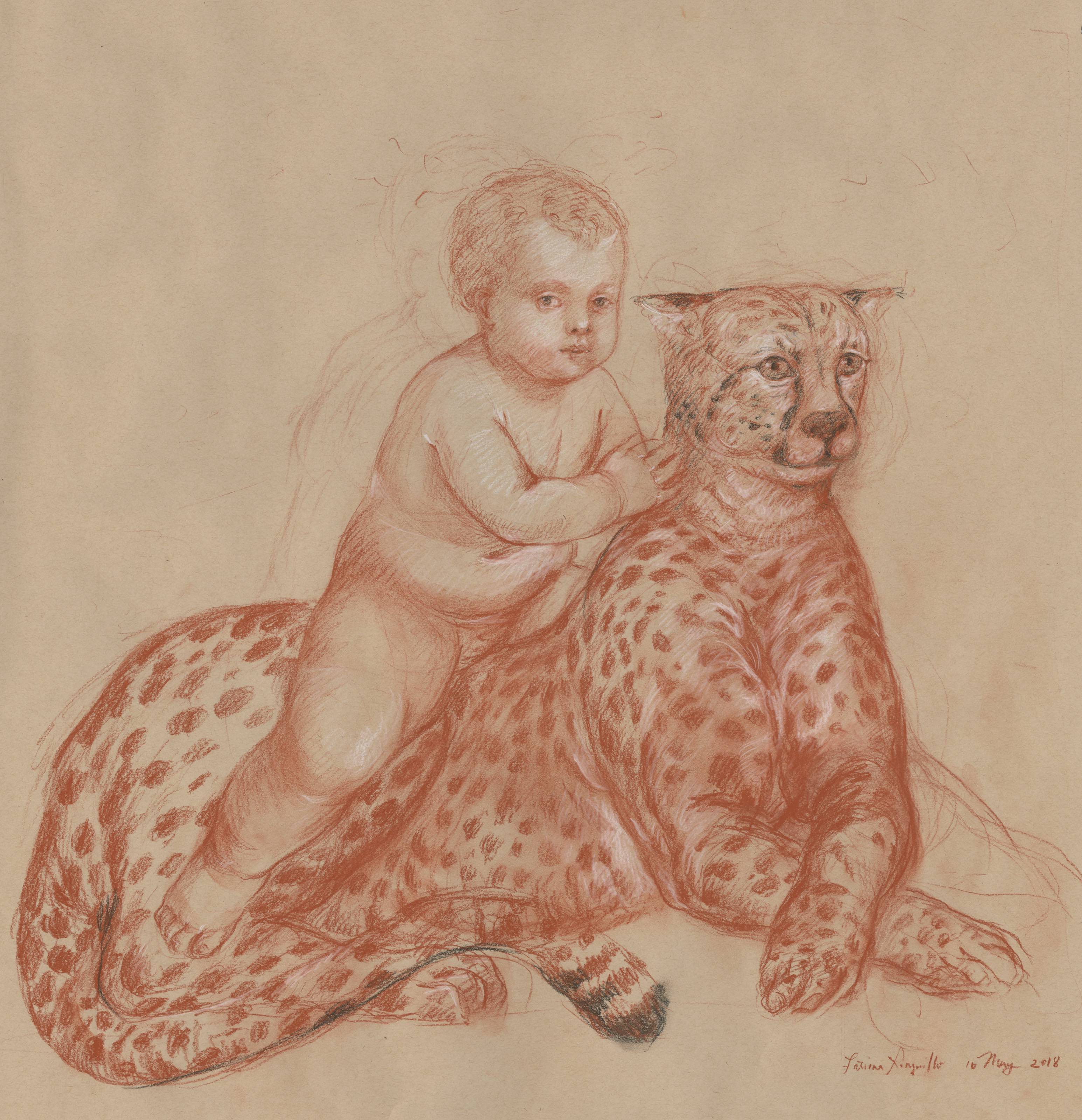
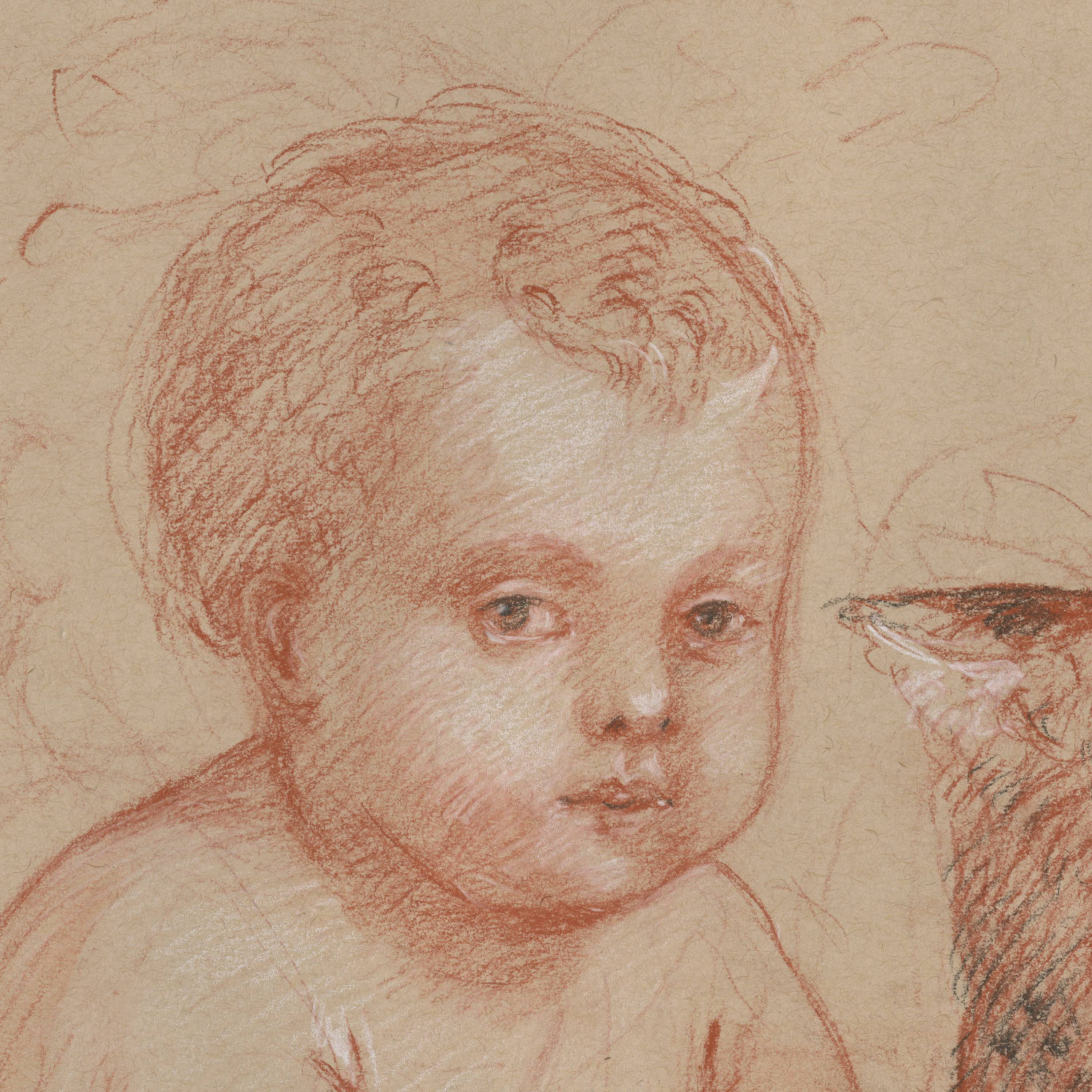
I draw on a toned paper, in this case Strathmore Toned Tan Sketch paper. I use Conté à Paris pencils in sanguine and white and use General’s carbon pencil for the black.
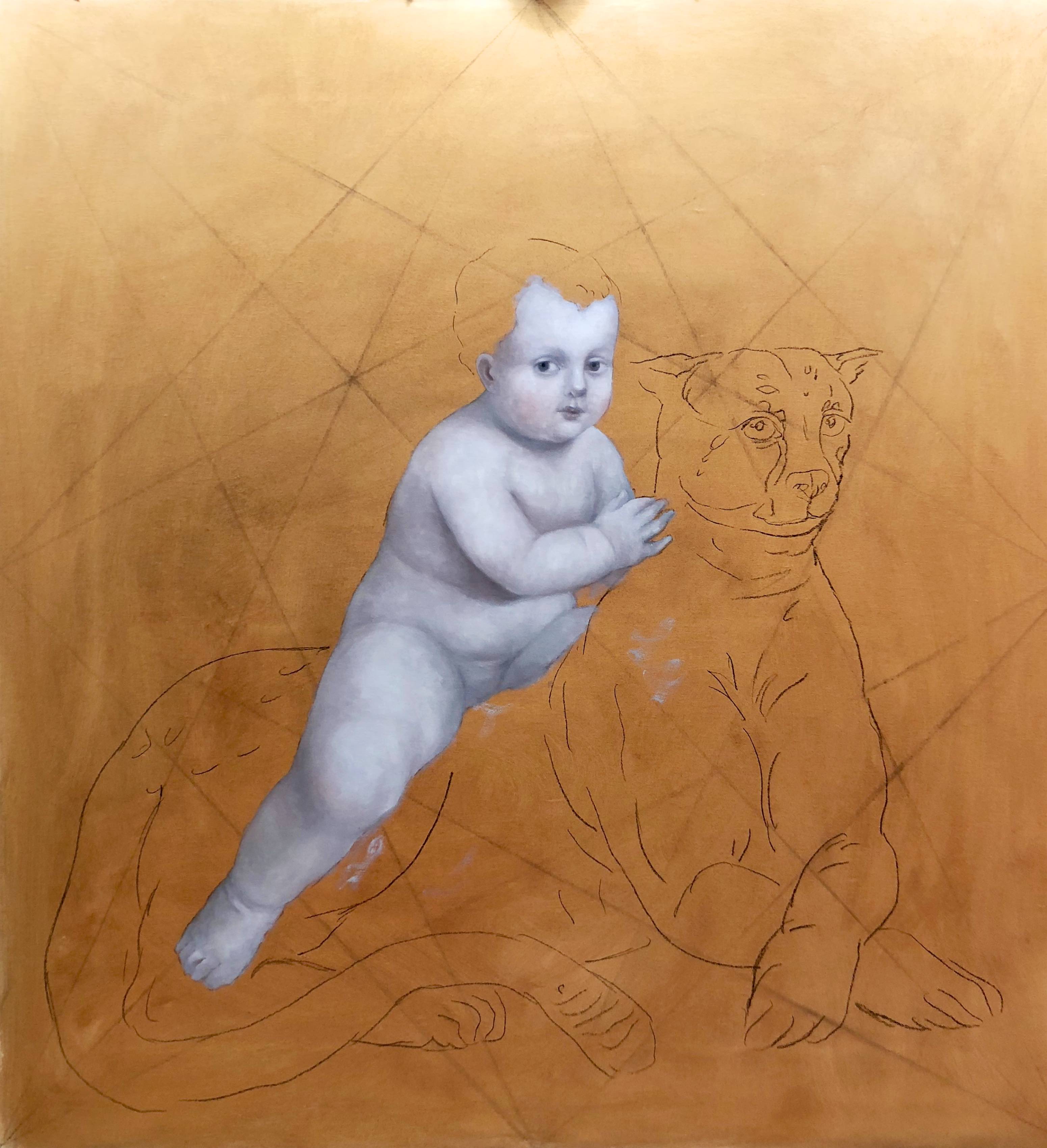
How to Paint with Oil: Initial Drawing and Underpainting Stage
I prepare the canvas first with a transparent stain of a terra cotta color, also known as an imprimatura. To begin I transfer the drawing onto the canvas using a projector and a compositional grid as a guide. There are many methods of transferring a drawing onto a canvas, from a simple carbon paper transfer, using a grid method and manually scaling up, or a projector. I use a carbon pencil to draw the outlines.
In the underpainting stage, the flesh is painted with a foundation mix of lead white and titanium white, a cool black such as German vine black, and a cool red such as Venetian red. I take care to make this first layer opaque. Subsequent layers will use increasingly transparent paint layers, and a solid underpainting is key.
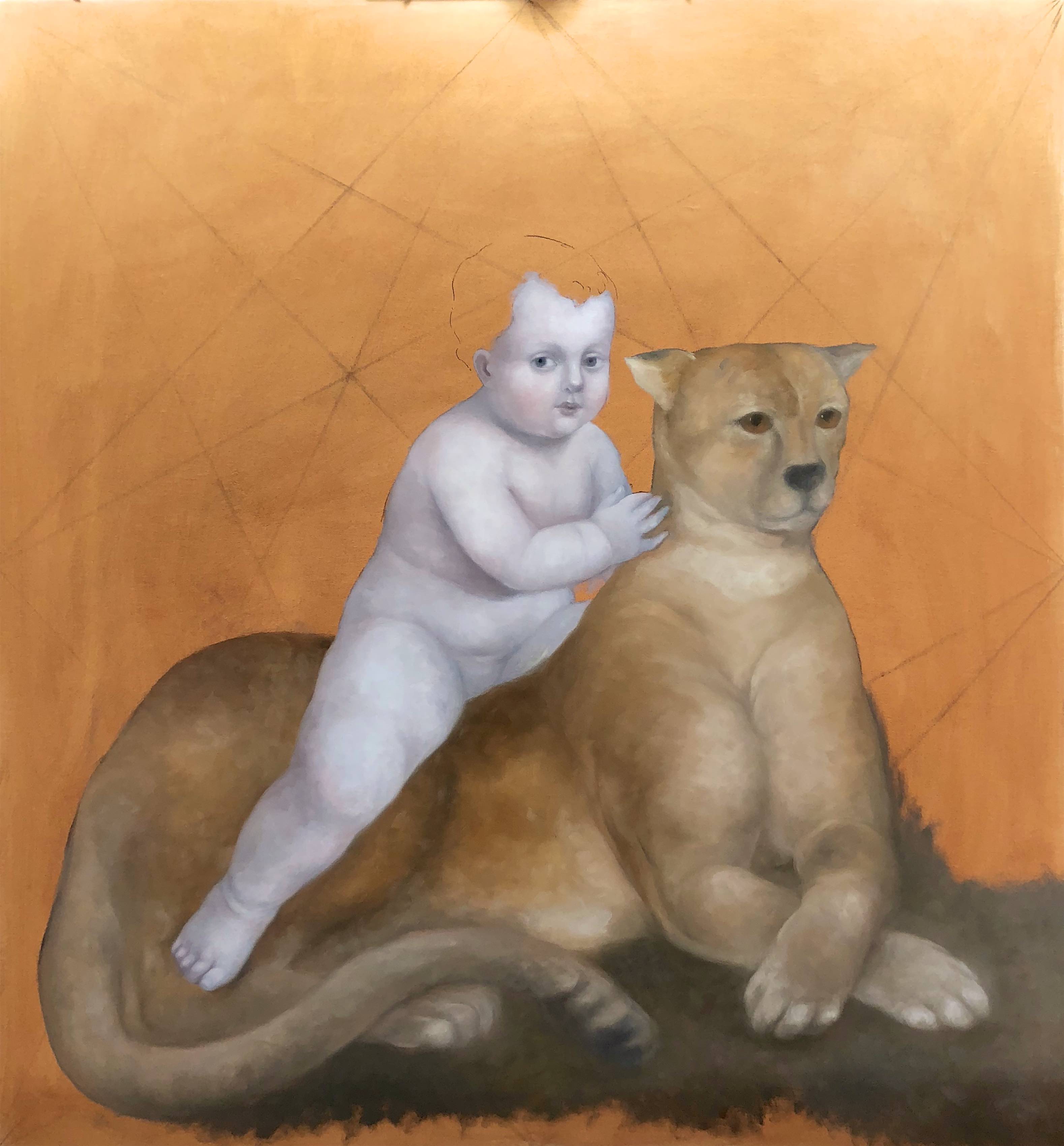
The cheetah is blocked in using earth colors for the masses. I maintain a solvent-free studio, so these first color passages are laid in with lean undiluted paint. Sometimes it may be necessary to thin the paint to make it more workable, and this can be done with the most minute addition of oil of spike lavender, but this is done sparingly and can be avoided by using paint with properties suited to a painting style without the need for additional mediums or solvents. It is therefore necessary to use good strong brushes that can move the paint such as Rosemary and Co.’s Ivory or Ultimate Bristle range.

The landscape background and foliage is also blocked in. This entire painting stage is done with muted earth colors. I primarily use a palette made of earth colors plus ultramarine blue. Earth colors usually have low oil content and a fast drying time, which in addition to lead white makes for a very stable and strong underpainting layer. If one paints without diluting with mediums, then instead of a fat over lean technique, one uses a fatter over fat technique. It is fundamental to observe the rule of each subsequent layer being oilier (with the addition of medium or a pigment with higher oil content) than the one underneath.
How to Paint with Oil: What does “fat over lean” mean?
In contrast to the direct or alla prima method of painting, which is completed in one session, the indirect method of painting relies on several layers of paint over the course of multiple painting sessions. It is therefore important to make sure that paint layers adhere to each other and dry appropriately: that is, the layer below (the lean layer) should be faster drying than the layer above (the fat layer). Paint straight out of a tube may be considered “lean” and can become leaner by diluting with a solvent such as odorless mineral spirits or oil of spike lavender. Paint becomes oilier or “fatter” with the addition of oils and mediums such as linseed oil or alkyd resin. If the layers are reversed and become “lean over fat” then the upper layer may dry before the lower layer, possibly causing future wrinkling and cracking of the paint surface. This principle can be observed not just by the judicious use of mediums but also in recognizing the different properties of paint pigments. In general, earth and opaque colors have low oil content and are suitable for lower layers. Transparent colors such as crimson lake usually have a high oil content and are therefore more suitable for the upper layers, for example in a glaze layer. However many layers it takes to complete a painting is up to individual style and can be done soundly as long as one keeps to the adage of “fat over lean.”

After the underpainting is dry, I begin using a touch of M. Graham walnut alkyd medium applied with a makeup sponge with the excess wiped off. This very thin layer of medium will give the paints something to grab onto. The flesh is overpainted with warmer earth reds and blacks along with a green earth. The warmth of the tints depends on the complexion one is trying to achieve. I like to think of this as the “carnation” stage, laying on the red blush of a flower.
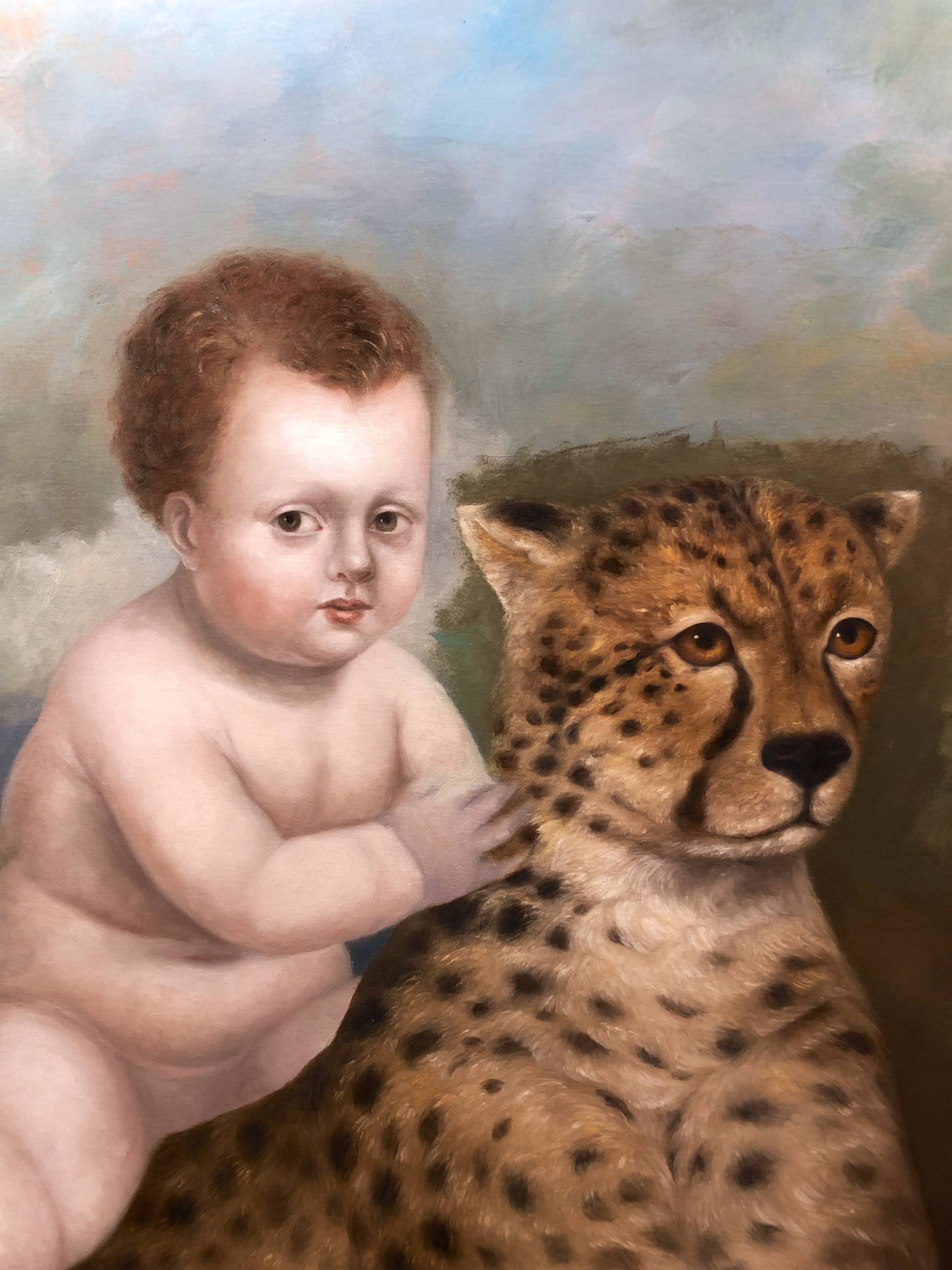
The laborious process of painting fur begins. This requires patience in working one small section at a time. I try to minimize the use of mediums added directly to paint. However, I find Rublev Natural Pigments’ Velazquez medium helpful in adding body and mild impasto to paint when needed.

The painting commences, little by little. Details start to form. In this painting, I invented the landscape, foliage, and details as I went. I did not have a clear idea of them in the drawing. Too much preparation has always led me to a stiffness of execution, and a mechanical feeling in a painting. It is enough for me to have a general color and temperature idea as long as the drawing is sound. A painting is never static while it is on the easel. It takes on a life of its own and brings about many delightful unexpected surprises in the end — quite magical really. I myself never know what my paintings will look like in the end, trusting the process entirely. I like leaving something to chance and am content to begin with only an idea.

In this detail one can see instances of the unexpected delights in painting. The coral and pearl jewelry and butterfly were a late addition and once I added them in, I knew the painting was finished. Once the painting is finished and dry, I varnish with two coats of Gamblin GamVar varnish.
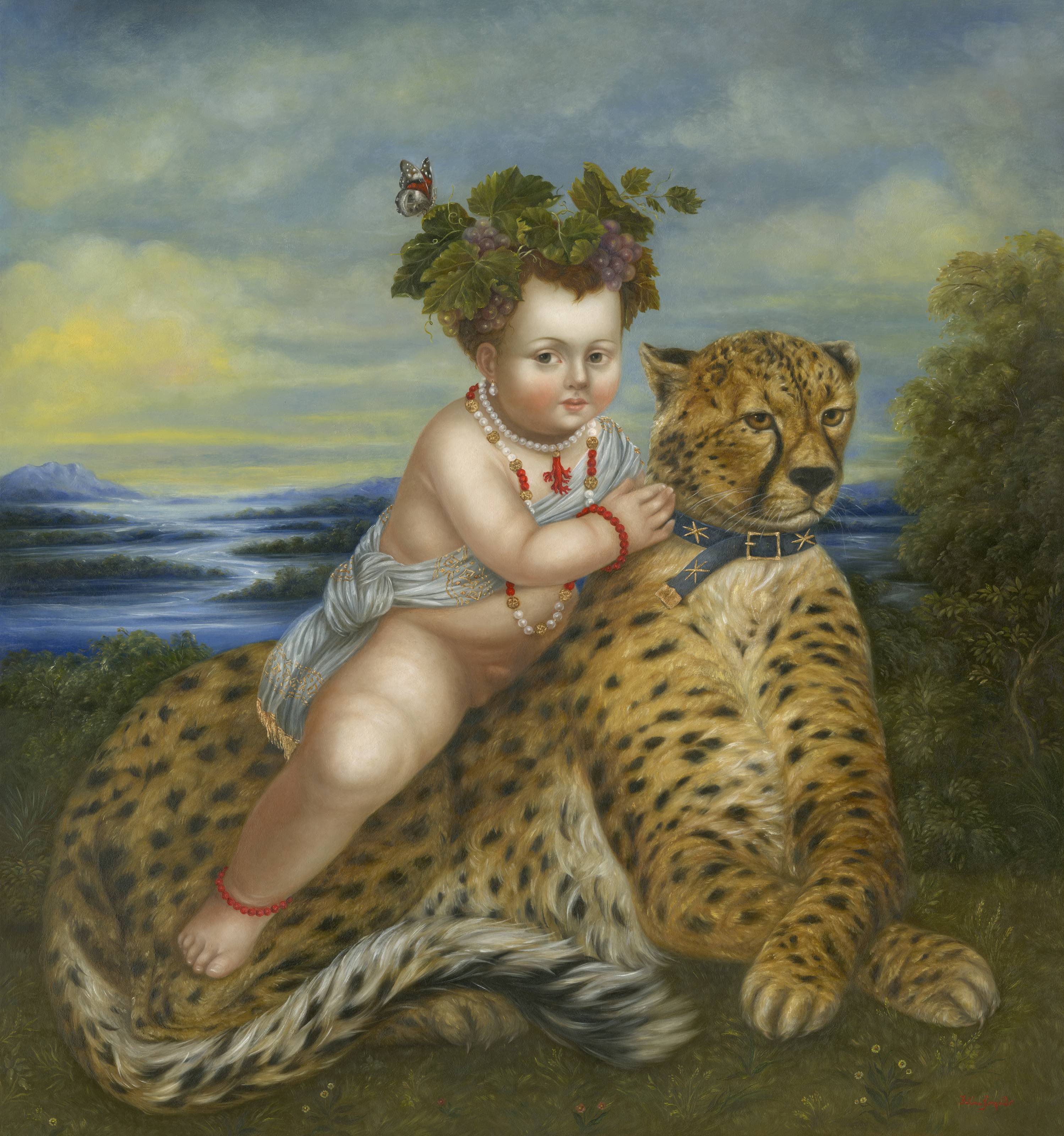
About the Artist:
Fatima Ronquillo is a self-taught painter who combines old master techniques with a playful, modern sensibility to create a world where art history meets with imagined characters from literature, theatre, and opera. Born in San Fernando, Philippines, in 1976, Fatima Ronquillo emigrated as a child to the United States in 1987 where her family settled in San Antonio, Texas. She began exhibiting her work from the age of 15 and is now widely collected in the United States and internationally. Her work has appeared in numerous art publications including American Arts Quarterly, Southwest Art, and American Art Collector as well as in the fashion magazines Vogue Gioiello, Marie Claire, and A Magazine Curated By Alessandro Michele. Her debut book, Spellbound, is to be published in spring 2019 by the Unicorn Publishing Group. She lives and works in Santa Fe, New Mexico.
Learn beginner-advanced techniques for painting with oil with Streamline Premium Art Videos!





Beautiful work!! And thank you for such a detailed explanation of how the painting came about.
God bless, C-Marie
I just saw Fatima’s show at the Meyer gallery and it is delightful work! As a fellow artist I appreciate her sharing the wonderful technique of painting that she has mastered. Thank You!
Comments are closed.